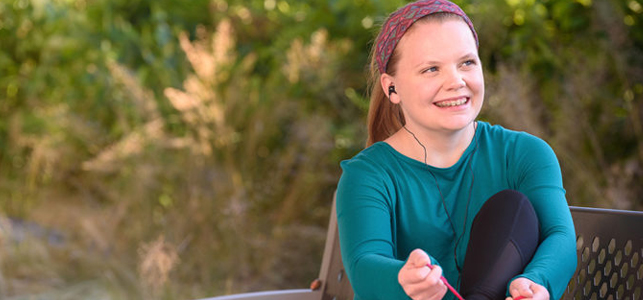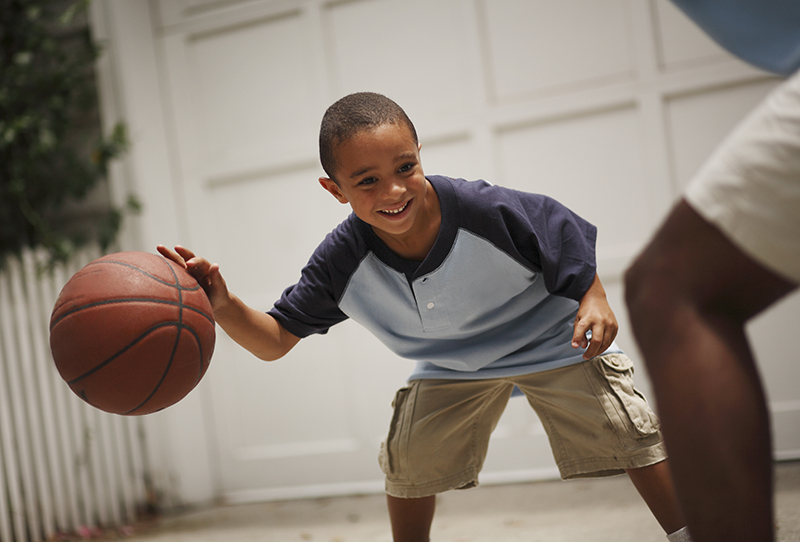Children's Emergency Department is now located in Children's Tower: 1001 E. Marshall Street.
Learn more
 A recent study found that 80 percent of parents overestimate the amount of physical activity their child gets. That same study found that 75 percent of parents overestimate the intensity – which is how much energy (calories) the body uses to perform the activity.
A recent study found that 80 percent of parents overestimate the amount of physical activity their child gets. That same study found that 75 percent of parents overestimate the intensity – which is how much energy (calories) the body uses to perform the activity.
These statistics are worrisome on a number of levels. If we think a child is already getting enough physical activity, we may not be likely to encourage them to participate in more. But how can we as parents know how much exercise they’re getting when we can’t be there every moment of the day to see them in action? And how do we determine how intense what they’re doing is? We have several simple strategies that can help.
The physical activity recommendation for children and teens is at least 60 minutes every day of the week and most of the activity each day should be moderate or vigorous intensity. Luckily 60 minutes of physical activity can be achieved in lots of different ways! Small bouts of activity throughout the day can be combined to meet the 60-minute minimum, and these activities can be done at school, at home, the park, gym, ANYWHERE!
The easiest way to find out is by talking to your child. Just like asking what they learned in math class or did with their friends, ask what physical activity or exercise they did that day. Maybe they played soccer for an hour in gym and then lifted weights after school. Maybe your child didn’t have gym that day but had health class instead. Their response can prompt your next move: “That’s fun! Sounds like you got in your physical activity minutes today” or “It sounds like you didn’t get to move around too much today. Let’s take a family walk to the playground and play there for a bit after dinner.”
This can be particularly difficult if you’re not with your child when they’re active, but again, talking with your child helps. If you weren’t with them, ask how they felt during their activity. Was it difficult? Did it cause your heart to race? If you’re with them, observe how they’re breathing and the effort they’re putting into the activity. Physical activity is divided into three intensities – light, moderate and vigorous. Here’s how you can tell the difference:
Light activities are more leisurely and require little effort (walking at a casual pace, folding laundry, stretching, etc.). There isn’t a noticeable change in heart rate or breathing with light activities.
Moderate activities require a fair amount of effort (walking at a brisk pace, lifting weights, swimming laps, etc.). These activities cause heart rate and breathing to increase to the point that it can be difficult to sing along to a song.
Vigorous activities require a great deal of effort (sprinting, climbing stairs, jumping rope, playing tag, dancing, kickboxing, etc.). During vigorous activities your heart beats much faster than normal and your breathing rate is so quick it’s difficult to talk.
The intensity exerted for physical activities varies for each person because everyone has a different fitness level, so keep in mind that what may be difficult for you may be easy for them, or vice versa. It’s also important to remember that the more often an exercise is performed, the easier it will become, so intensity may need to be increased as activities become easier!
Plan family physical activities and play with your child. These do not have to be extravagant outings! Things like helping your child learn a new activity or sport, going for a hike as a family or exercising at the gym together can all help boost physical activity. Planned activities also give you and your child something to look forward to and an opportunity to bond!
Choose activities that are developmentally appropriate. If your child is younger, activities like riding bikes, playing soccer and visiting a playground are good options. If your child is older, lifting weights, resistance training like push-ups or other body-weight exercises, and participating in sports (whether for a team or around the neighborhood) are appropriate activities.
Provide equipment and toys for your child to be active at your home. You don’t need to build a gym in your home to provide opportunities for your child to be active. Small items like jump ropes, hula hoops, sports balls and resistance bands are great things to have in the house. A basketball hoop, bike, ping pong table and skateboard are a few bigger items to have at home for activity opportunities. And don’t forget about outdoor games like bocce ball, Spikeball and Frisbee that can be played at home or packed up and taken anywhere! And when considering equipment, always make sure your child has a good pair of tennis shoes to wear while being active as well as appropriate safety gear.
Limit screen time! Screens are all around and are unavoidable. Kids use them at school, home and friends’ houses – and even for a lot of their homework! It’s OK for your child to use these devices but it’s important to set limits and guidelines that work for your family. Daily time blocks with the screens off is important to stimulate new energy and creativity for your child!
Be a role model. Kids are much more likely to engage in physical activity when they see the adults in their lives make it a priority. Being physically active has benefits for all. So why not do something that benefits you AND positively impacts your child?!
By Sarah Farthing, exercise physiologist, Healthy Lifestyles Center
Clinical group exercise classes and one-on-one personal training for teens/tweens – Exercise trainers specializing in pediatric fitness work with teens to improve their fitness, teach them about exercise and give them the tools to be confident exercising on their own. Participants need to have exercise clearance from a CHoR medical provider and be at least 11 years old. Call (804) 527-4759 for more information or visit our exercise services page to learn more.
TEENS STRIVE – TEENS STRIVE is a three-month lifestyle intervention for teens ages 12-16 with obesity. The program includes weekly individual behavioral weight management visits that cover topics like healthy eating and goal setting, plus an exercise training program. Participants will visit the program’s dedicated gym facilities three times a week where they will work with personal trainers to improve their fitness. For more information and to see if your teen is eligible, visit chrichmond.org/STRIVE or call (804) 527-4756.